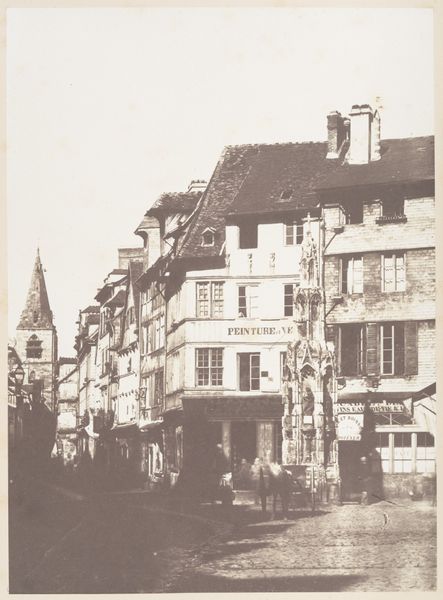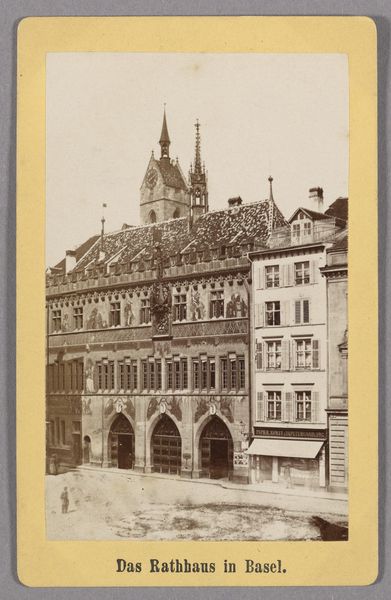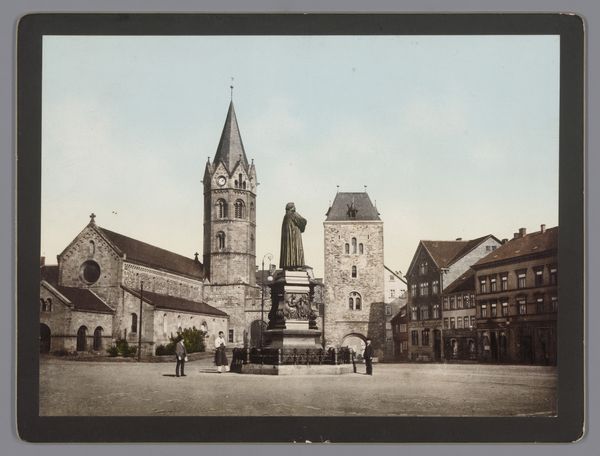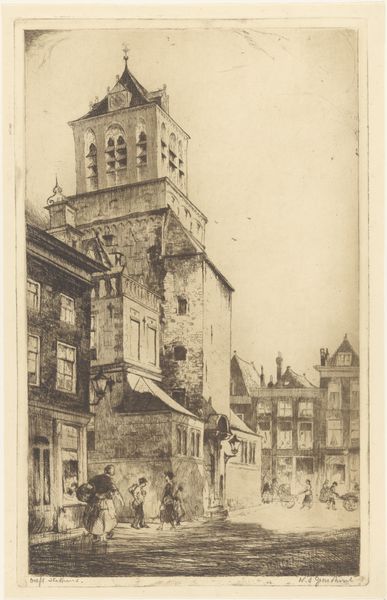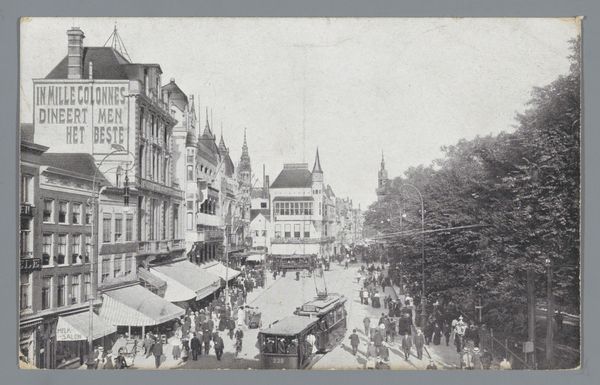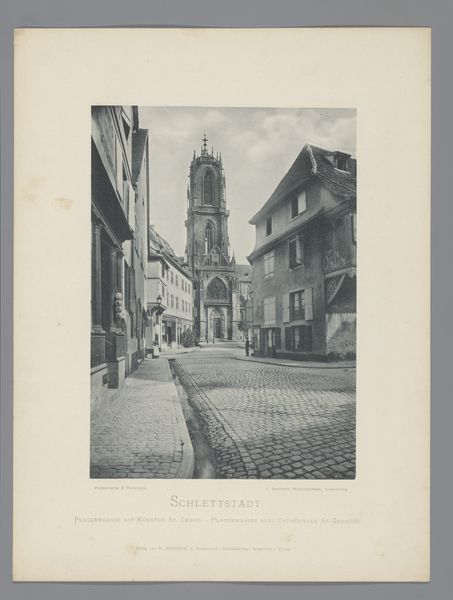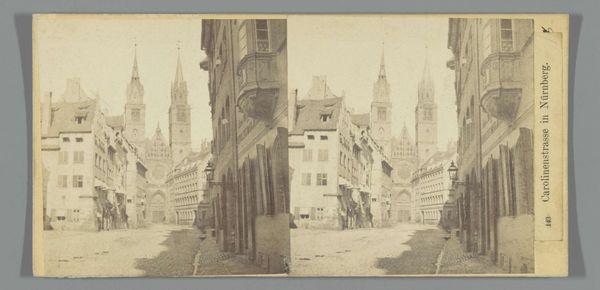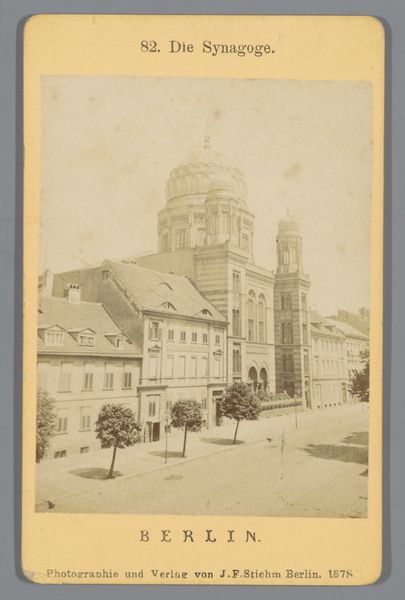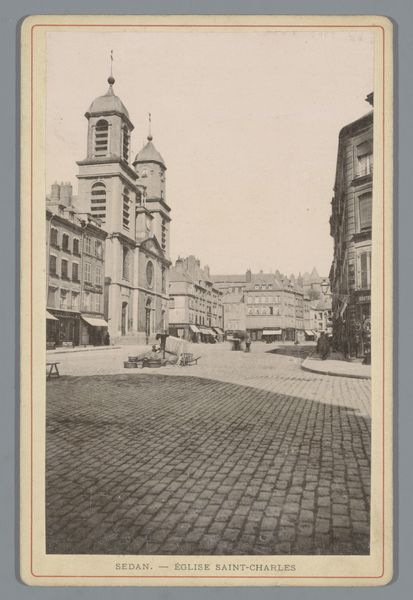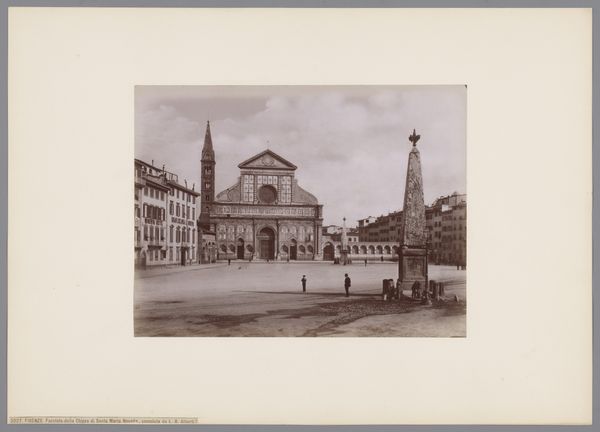
photography, gelatin-silver-print, architecture
#
16_19th-century
#
pictorialism
#
historic architecture
#
photography
#
romanesque
#
gelatin-silver-print
#
19th century
#
cityscape
#
watercolor
#
architecture
Dimensions: height 270 mm, width 213 mm
Copyright: Rijks Museum: Open Domain
Editor: This gelatin-silver print, "Zytgloggetoren in Bern," captures a cityscape scene of Bern between 1895 and 1930. I’m immediately struck by the sheer number of people depicted, giving it a vibrant, bustling atmosphere despite the old-fashioned sepia tone. How would you interpret this image? Curator: I see this as more than just a picture, but a document, a statement about power, about how urban space is both shaped by and shapes its inhabitants. The Zytglogge, or astronomical clock tower, dominates the image. But how does the photographer, presumably a white European man, choose to represent the people populating its shadow? Consider, for example, that photography at this time was still relatively new and carried a lot of authority. Whose narratives are being prioritized and whose are being elided? Editor: So, you are suggesting that this image, though seemingly a simple cityscape, has potentially deeper socio-political implications due to when it was taken, the vantage point and choices by the photographer? Curator: Exactly. The composition draws your eye to the tower, signifying perhaps temporal and civic authority. But also think about the labour that’s evident – the workers and vendors in the foreground. What is their relationship to this established power structure? How are they benefiting from it, or are they instead, being dominated? Is the 'everyday' here actually an endorsement of hierarchies and inequalities, seen through a deliberately ‘artful’ lens, playing into popular pictorialism? Editor: I hadn't considered it that way. I was simply focused on its beauty. Curator: And beauty is certainly present! But engaging with the complexities allows us to not just appreciate the image, but also interrogate the power dynamics embedded within it. Editor: That's a perspective I'll definitely carry forward when analyzing images from this era. It changes the way I perceive not just what is there but who gets to decide what's worthy of being captured. Curator: Precisely. Recognizing these potential biases allows for a much more critical and enriched experience.
Comments
No comments
Be the first to comment and join the conversation on the ultimate creative platform.


